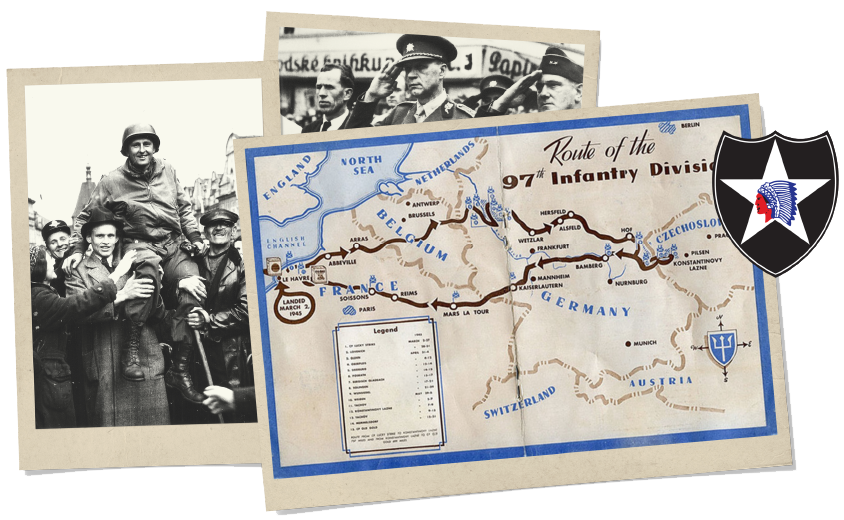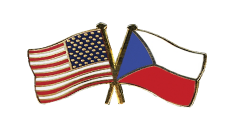Many interesting moments and fates arrived and unfolded during the US Army’s advance into western Bohemia—the present-day Pilsen Region—at the end of World War II.
Learn the destinies of those who fought for liberation and of this region’s inhabitants on the roads to liberation during the US Army’s advance towards Pilsen.
From the moment they entered Czech territory on April 18, 1945 until 9:30 a.m. on May 7, 1945, the American ground forces lost 116 soldiers here, while 406 officers and soldiers were wounded.

The Paths of Liberation interlink places associated with the liberation of western Bohemia by the US Army in spring 1945. They bring readers facts and recollections about the fates of US Army soldiers and local citizens at the very end of World War II.
This Pilsen Region project presents the sites of all the important battles fought by the US Army while liberating western Bohemia and celebrates many forgotten stories of those who fought in the battles for liberation in the Pilsen Region, whose fates are indelibly intertwined with these places of commemoration.
Meanwhile a timeline presents the sequence of wartime events in spring of 1945. You’ll also find detailed information here on how and where to visit these sites in person and honor the memory of the events at the end of World War II in western Bohemia.
The American forces crossed the Czech border on Wednesday, April 18 at 9:55. A reconnaissance platoon of the 358th Infantry Regiment of the 90th Infantry Division of the US 3rd Army’s 12th Corps passed into Czech territory at the “Cat’s Head” rocks near the town of Klatovy. Shortly after noon on that same day, a forward patrol arrived in the town of Hranice (German name: Rossbach).
The 3rd US Corps:commanded by Lt. Gen. J. A. Van Fleet, comprised the 80th, 86th, and 99th Infantry Div. and the 14th Armored Div. This corps operated in Austria and at the borders of Austria and Italy.
The 20th US Corps: commanded by Lt. Gen. W. H. Walker, comprised the 4th, 65th, and 71st Infantry Div. and the 13th Armored Div. This corps operated in Germany and Austria.
The 5th US Corps: commanded by Lt. Gen. Clarence R. Huebner, comprised the 1st Infantry Div. (“The Big Red One”), the 2nd Infantry Div. (“Indianhead”), the 97th Infantry Div. (“Trident”), and the 9th Armored Div. (“Phantom”) and 16th Armored Div. This corps also included the 102nd CRG (Cavalry Reconnaissance Group) assembled from the 38th and 102nd CRS. The corps’ operations in the region followed this route: Aš – Cheb – Karlovy Vary – Plzeň – Klatovy. The corps command was in Grafenwöhr, Bavaria.
The 12th US Corps: was commanded by Lt. Gen. S. LeRoy Irwin and comprised the 5th Infantry Div. (“Red Diamond”), the 26th Infantry Div. (“Yankee”), the 90th Infantry Div. (“Tough Ombres”), the 4th Armored Div. (“Phantom”), and the 11th Armored Div. (“Thunderbolt”). This corps also included the 2nd CRG, assembled from the 2nd and 42nd CRS (Cavalry Reconnaissance Squadron). The corps’ operations in the region followed this route: Aš – Cheb – Karlovy Vary – Plzeň – Klatovy. The corps command was in Grafenau, Bavaria.
The following independent tank battalions (or portions thereof) were deployed within the 5th and 12th US Corps and their divisions during the liberation of Czech territory: the 737th, 741st, 745th, 746th, 778th, and 782nd TB, as well as the following independent anti-tank battalions (or portions thereof): the 612nd, 633th, 656th, 704th, 773rd, 803rd, and 818th TDB.


These tour routes copy the movements of the US Army during the liberation of West Bohemia in the spring of 1945. Commemoration sites are connected into these tour routes in a way that ensures each site leads into the next. You’ll also find regional and private museums, as well as tourist activities connected with these military memorial sites.
